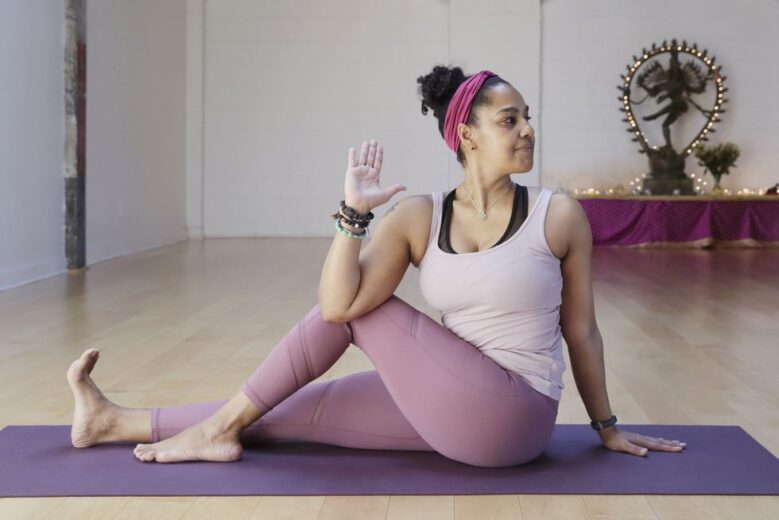Introduction: The gluteal muscles, commonly referred to as the glutes, are some of the largest and most powerful muscles in the human body. They play a critical role in our daily movements, from walking and standing to more strenuous activities like running, cycling, and lifting. Glute stretches yoga is an essential part of any fitness routine as it can help improve flexibility, reduce the risk of injury, and enhance overall muscle function. In this article, we’ll explore the importance of stretching the glutes and provide a comprehensive guide on how to do it effectively.
Understanding the Gluteal Muscles
Before delving into stretching techniques, it’s essential to understand the gluteal muscles. There are three primary muscles that make up the glutes:
- Gluteus Maximus: This is the largest and most powerful muscle in the glutes. It’s responsible for hip extension, such as standing up from a seated position, and outward thigh rotation.
- Gluteus Medius: Located on the outer surface of the pelvis, the gluteus medius assists with hip abduction (moving your leg away from your body’s midline) and stabilizing the pelvis during walking and running.
- Gluteus Minimus: The smallest of the three, the gluteus minimus also aids in hip abduction and rotation.
Why Stretch the Glutes?
Stretching the glutes is vital for various reasons:
- Improved Flexibility: Regular glute stretches can increase the range of motion in your hip joint, making daily movements more comfortable and reducing the risk of injury.
- Reduced Back Pain: Tight glutes can lead to lower back pain. Stretching them can alleviate this discomfort by relieving tension in the muscles that connect to the lower spine.
- Enhanced Posture: Flexible and strong glutes contribute to better posture, reducing the likelihood of slouching or overcompensating with other muscle groups.
- Injury Prevention: Stretching the glutes can prevent injuries by ensuring these muscles are ready for action, especially if you engage in activities like running or weightlifting.
Effective Glute Stretching Techniques
- The Pigeon Pose:
- Start in a tabletop position on the floor.
- Bring your right knee forward, placing it behind your right wrist.
- Extend your left leg straight back behind you.
- Lower your upper body toward the floor, feeling a deep stretch in your right glute.
- Hold the stretch for 20-30 seconds, then switch to the other side.
- Seated Glute Stretch:
- Sit on the floor with your legs extended.
- Bend your right knee and place the sole of your right foot against your left inner thigh.
- Gently press your right knee down toward the floor, feeling a stretch in your right glute.
- Hold the stretch for 20-30 seconds, then switch to the other side.
- Standing Glute Stretch:
- Stand with your feet hip-width apart.
- Cross your right ankle over your left knee.
- Slowly lower your hips as if you were sitting back into a chair.
- Feel the stretch in your right glute and hold for 20-30 seconds before switching to the other side.
- Supine Glute Stretch:
- Lie on your back with your knees bent and feet flat on the floor.
- Cross your right ankle over your left thigh.
- Reach through the gap created between your legs and grab the back of your left thigh.
- Gently pull your left leg toward your chest, feeling the stretch in your right glute.
- Hold for 20-30 seconds before switching to the other side.
Conclusion
Stretching your glutes is a simple yet effective way to enhance your overall mobility, reduce the risk of injury, and improve your daily quality of life. Incorporate these stretching techniques into your fitness routine, and don’t forget to warm up before you begin. Your glutes will thank you for the extra care and attention, leading to stronger, more functional muscles and a healthier, more active lifestyle.

